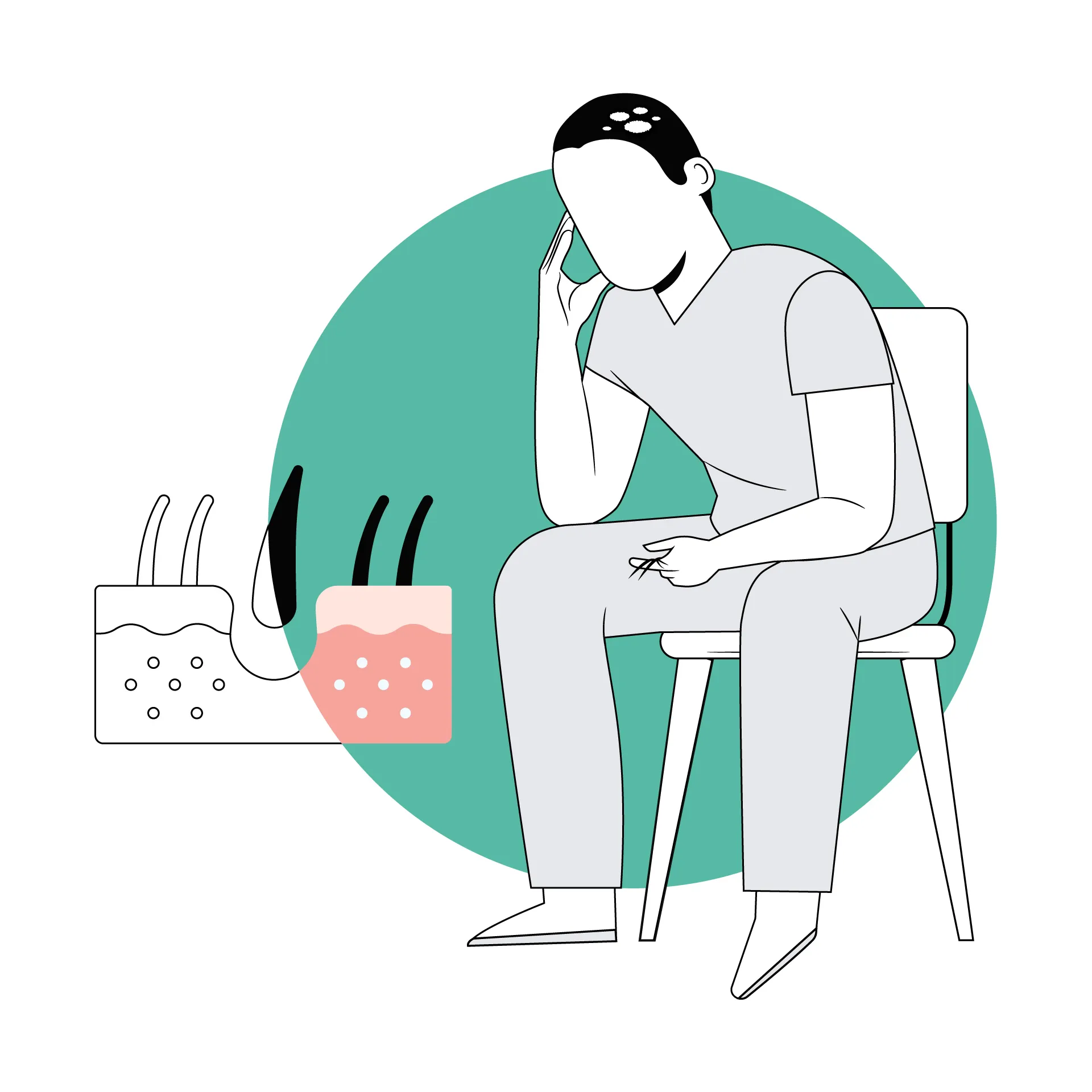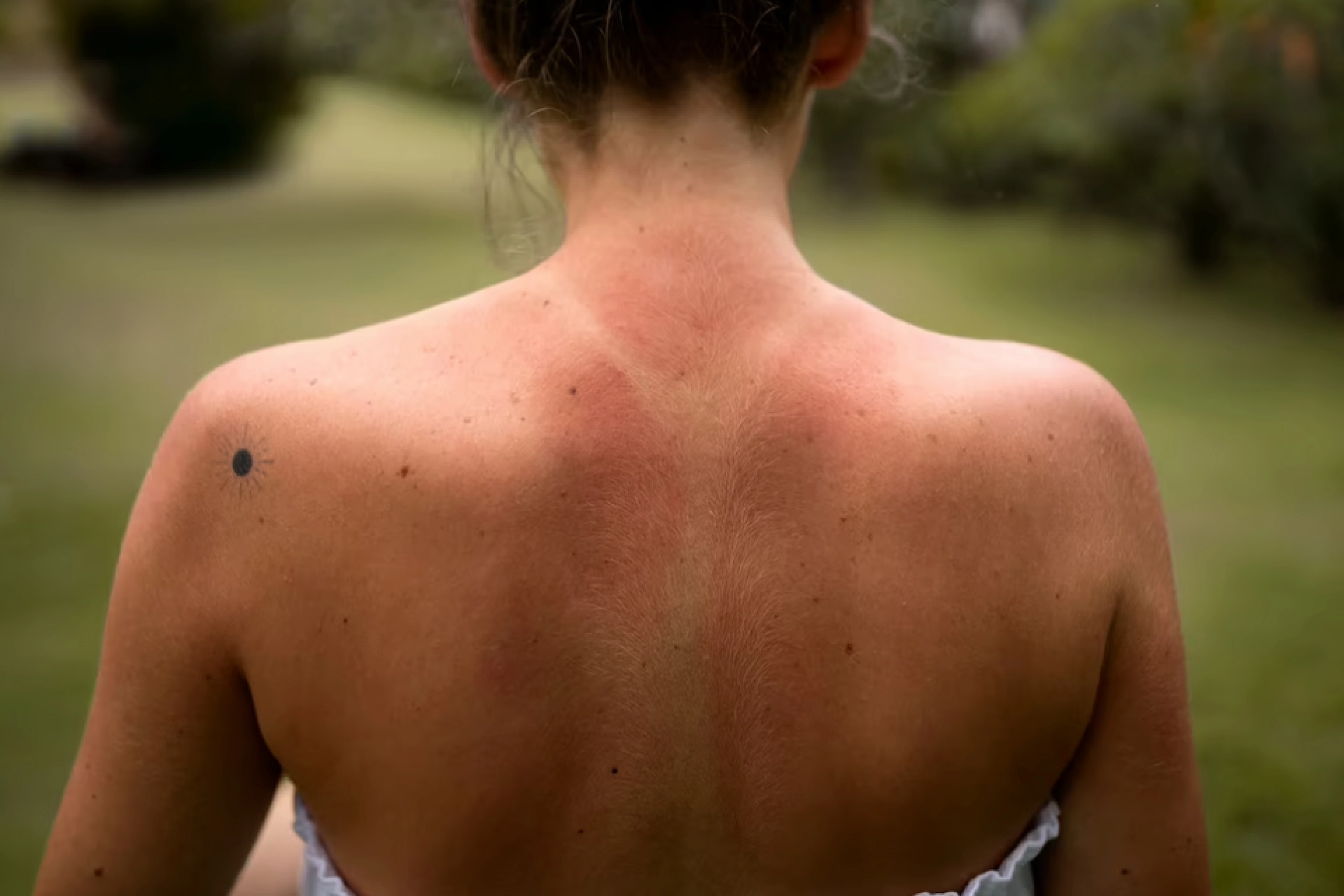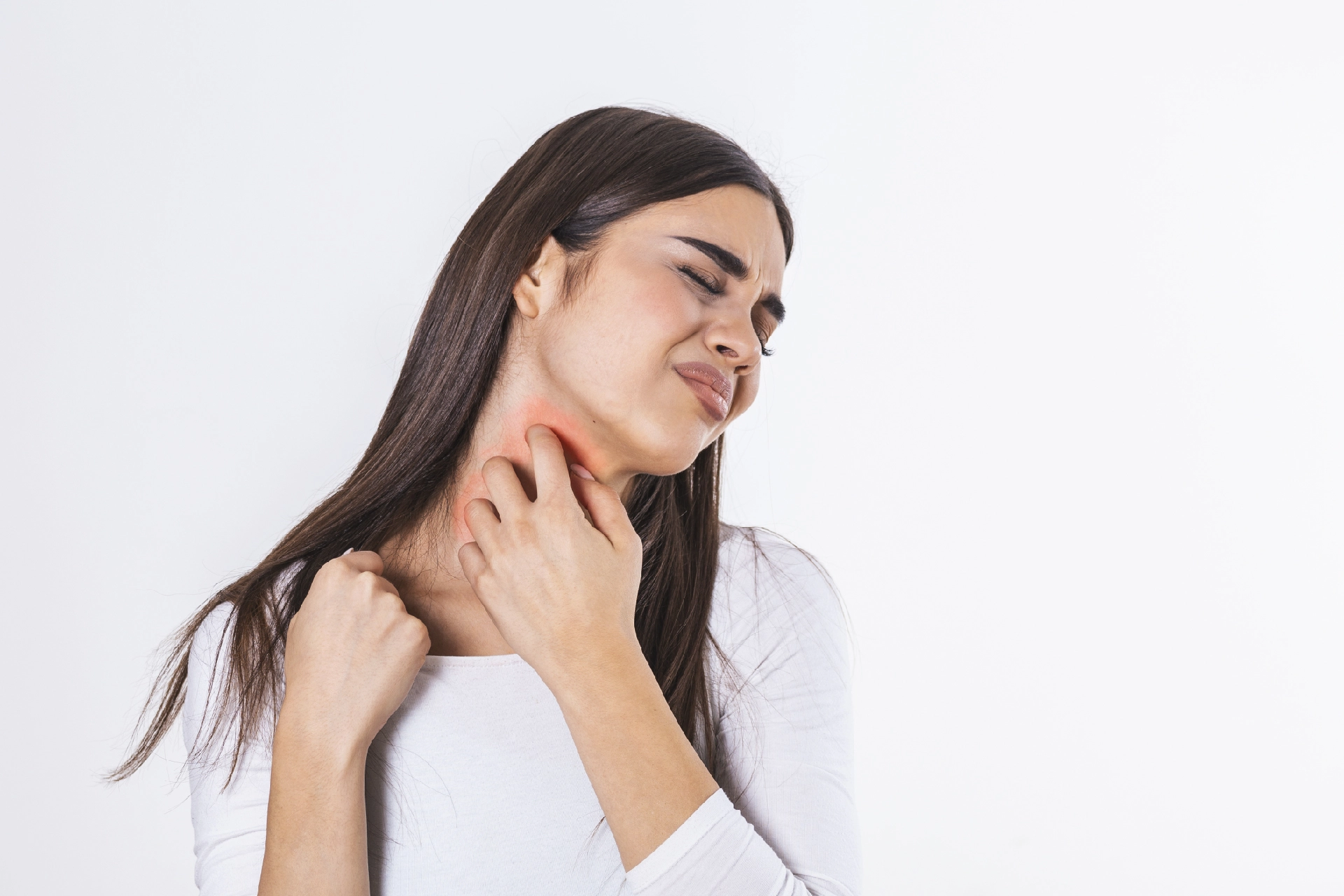Physical Medicine and Rehabilitation | 7 min read
Alopecia Areata: Causes, Symptoms, Diagnosis And Treatment
Medically reviewed by
Table of Content
Key Takeaways
- There are four different types of alopecia areata you need to know
- Excessive hair loss is one of the major alopecia areata symptoms
- A popular alopecia areata home remedy is rubbing onion juice on scalp
Alopecia areata is a condition that results in severe hair loss. In this autoimmune disorder, you may experience hair fall in small patches that increases over time. In extreme cases, it can result in complete loss of hair on the scalp or even on the entire body. Approximately 0.7% of people in India are affected by this condition [1]. It occurs when your immune system attacks hair follicles [2]. The trigger for this condition is your genetic constitution.
While your hair may grow back after some time, there are chances for it to fall out again. People with a family history of this condition are at increased risk of developing alopecia areata. If you are suffering from hay fever, asthma or thyroid disease, you may be prone to this condition. Read on for further insight on this hair loss condition and its symptoms.
Alopecia Areata Causes
Alopecia areata is an autoimmune condition. It occurs when the immune system misidentifies healthy cells as alien entities. Your immune system typically protects your body from invaders like viruses and bacteria.
The immune system, however, wrongfully damages your hair follicles when you have alopecia areata. The structures from which hairs grow are known as hair follicles. Hair loss results from the follicles getting smaller and stopping to grow.
This condition's precise cause is unknown to researchers. There have been some recognized potential risk factors, such as:
- A member of the family who has it
- Asthma
- Down Syndrome
- Pernicious anemia
- Allergies to certain seasons
- Thyroid disorder
- Vitiligo
- A deficiency in vitamin D
Additionally, nivolumab-induced alopecia areata is a disorder that occurs when using the cancer medicine nivolumab. Hair loss in these situations indicates that the medication is having an effect. [3][4]
One of the main causes is the high WBC count, which attack your hair follicle cells. This results in slow hair growth causing them to shrink [3]. However, the exact reason of why your immune system attacks its own cells is unknown. Research reveals that genetics does play an important role. Though stress is also considered a cause of this condition, genetic factors play a more prominent role. If you have rheumatoid arthritis or diabetes, you may develop this condition. When the hair fall occurs, you start to lose hair in clumps that take the shape of a quarter.

Symptoms Of Alopecia Areata
Hair loss is a major symptom of this condition. A few other alopecia areata symptoms include:
- Excessive hair loss in winter
- Small bald patches seen on your scalp
- Intense hair loss in short time
- Regrowth of hair in one part and hair loss at another
- Small patches becoming large and turning into a bald spot
While your scalp is affected, you should keep a close watch on your fingernails and toenails as well. Here are the early signs and symptoms that may appear when you develop alopecia areata.
- Appearance of white spots and lines on your nails
- Nails splitting and becoming thin
- Presence of pinpoint dents
- No more shine on nails
- Nails becoming rough
There are a few other clinical signs you need to monitor as well:
- Presence of white hair
- Growth of short hair, narrow at the bottom
- Excessive hair breakage
Types Of Alopecia Areata
There are different types of this condition based on the extent of hair loss.
- Alopecia totalis: In this condition, there is complete hair loss on your entire scalp.
- Alopecia universalis: If you are facing this condition, you tend to lose your hair all over the body and face. You may have hair loss on eyebrows, eyelashes, chest and back as well.
- Diffuse alopecia areata: When there is an unexpected thinning of hair on your scalp and not just in one particular patch or area, it indicates you have this type of condition.
- Ophiasis alopecia: This condition occurs when lose hair on your lower back and along the sides of your scalp.
Alopecia Areata Diagnosis
Consult a dermatologist specializing in skin conditions if you suspect you have alopecia areata. They'll do the following:
- Inform you of your symptoms
- Look at the places on your head where you are losing hair
- Check to see if the hairs at the edges of the bald patch are easily removable by gently pulling on them
- Examine if any individual hairs or follicles are shaped oddly
- Check your nails
- Rarely, you might undergo a biopsy, which entails the removal of a small portion of scalp skin for microscopic examination
- The causes of hair loss are numerous. To test for thyroid, hormone, or immune system issues, your doctor may have you undergo skin testing for fungus infections or blood tests[6][4]
If you suspect having this condition, you can talk to your dermatologist. Here is the usual diagnosis process.
- Doctors listen to your symptoms
- They examine the areas where you are facing hair loss
- Doctors check your nails, and pull your hair slowly to check if it breaks without much effort
In rare cases, you may have to undergo a biopsy or certain blood tests to check for thyroid or other hormonal problems.
Alopecia Areata Treatment
Though there is no permanent cure, the right treatment can help you regrow your hair. You may be asked to take corticosteroids, which are anti-inflammatory drugs specifically developed to treat autoimmune conditions. They may be given as an injection on the scalp or in the form of ointments. If there is excess hair loss, you may have to undergo topical immunotherapy. In this process, chemicals are applied on your scalp to produce allergic reactions. If the reactions work, your hair may regrow.
Alopecia Areata Medical Treatments
Topical Agents
To encourage hair growth, you can apply medicines directly to your scalp. Both over-the-counter (OTC) and via prescription, many medications are available.
Despite being widely used and available over-the-counter (OTC), minoxidil (Rogaine) is not FDA-approved for alopecia areata. You must seek a healthcare provider's advice or supervision before using it on locations like the scalp, brows, and beard. There is only proof that it helps those with mild cases of alopecia. Observing effects typically takes 4-6 months or more.
Anthralin (Dritho-Scalp) is a medication that irritates the skin to promote hair regeneration.
It is believed that corticosteroid creams, foams, lotions, and ointments like clobetasol (Impoyz) reduce inflammation in the hair follicle.
Injections
For mild, patchy alopecia, steroid injections get frequently used to promote hair regrowth on bald patches. The steroid is injected into the hairless area using tiny needles.
The procedure must be done every one to two months to promote hair growth. It does not stop the happening of new hair loss.
Oral Medications
Cortisone tablets are occasionally used for severe alopecia, but you should consult a doctor about this choice because of potential adverse effects.
You can also try immunosuppressants that are taken orally, such as methotrexate and cyclosporine. They function by preventing the immune system's response. Still, prolonged usage is not recommended because of the possibility of adverse effects like high blood pressure, liver and kidney damage, an increased risk of serious infections, and a kind of cancer called lymphoma.
Treatment with Laser and Light
A light sensitizer is used in photochemotherapy. It is sometimes known as light therapy or phototherapy, which uses particular ultraviolet light wavelengths for therapeutic benefits. A laser procedure offers precise radiation dosages to promote new hair development. Both treatments are regarded as secure and efficient.
Natural Remedies
Alternative remedies are sometimes used to treat alopecia areata in patients. But it's crucial to understand that each of these is experimental. Clinical trials have not been conducted on them, and there is no conclusive medical or scientific proof of their efficacy.[3][4]
Acupuncture, aromatherapy, vitamins, supplements (such as zinc and biotin), essential oils and other oils (including coconut, tea tree, and castor oil), onion juice massaged to the scalp, and probiotics are some examples of natural and alternative remedies.
According to some data, alopecia areata may become better from dietary changes.
Some people diagnosed with autoimmune disorders might consider adopting an anti-inflammatory diet.
Studies have also suggested that a Mediterranean diet may benefit alopecia areata patients.
Additional Read: Yoga for EyesAlopecia Areata Management
To ensure that your hair growth is not affected, take care to reduce stress. You may do this by practicing yoga and meditation. Eat a healthy diet so that your body is not deprived of essential nutrients. Protect your eyes from harmful UV rays by wearing sun glasses when you step out. Make sure that you cover your head with scarfs or hats when you go outside.
While alopecia areata causes hair loss, this condition can also affect your toenails and fingernails. Make sure not to miss these early warning signs. Timely diagnosis may help you manage the condition better. To address hair loss, connect to top doctors on Bajaj Finserv Health. Book an online doctor consultation within minutes and resolve your queries.
References
- https://ijdvl.com/alopecia-areata-an-update/#:~:text=It%20accounts%20for%202%2D3,%2C%20and%200.7%25%20in%20India.&text=In%20general%20population%2C%20the%20prevalence,some%20studies%20reported%20male%20preponderance.
- https://my.clevelandclinic.org/health/diseases/12423-alopecia-areata#:~:text=Alopecia%20areata%20is%20an%20autoimmune%20disease%2C%20where%20a%20person's%20immune,only%20in%20a%20few%20spots.
- https://www.healthline.com/health/alopecia-areata#causes
- https://www.webmd.com/skin-problems-and-treatments/guide/alopecia-areata
- https://www.niams.nih.gov/health-topics/alopecia-areata
- https://www.medicalnewstoday.com/articles/70956#Diagnosis
Disclaimer
Please note that this article is solely meant for informational purposes and Bajaj Finserv Health Limited (“BFHL”) does not shoulder any responsibility of the views/advice/information expressed/given by the writer/reviewer/originator. This article should not be considered as a substitute for any medical advice, diagnosis or treatment. Always consult with your trusted physician/qualified healthcare professional to evaluate your medical condition. The above article has been reviewed by a qualified doctor and BFHL is not responsible for any damages for any information or services provided by any third party.




